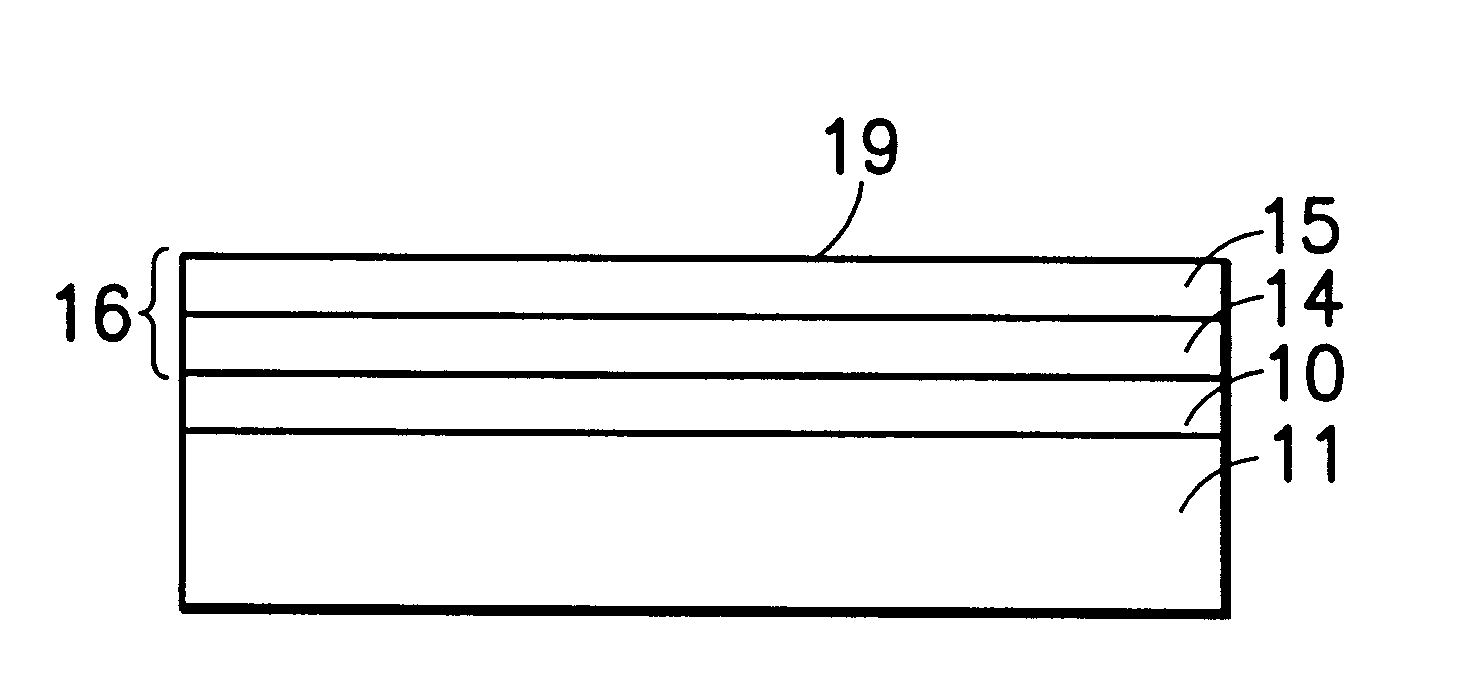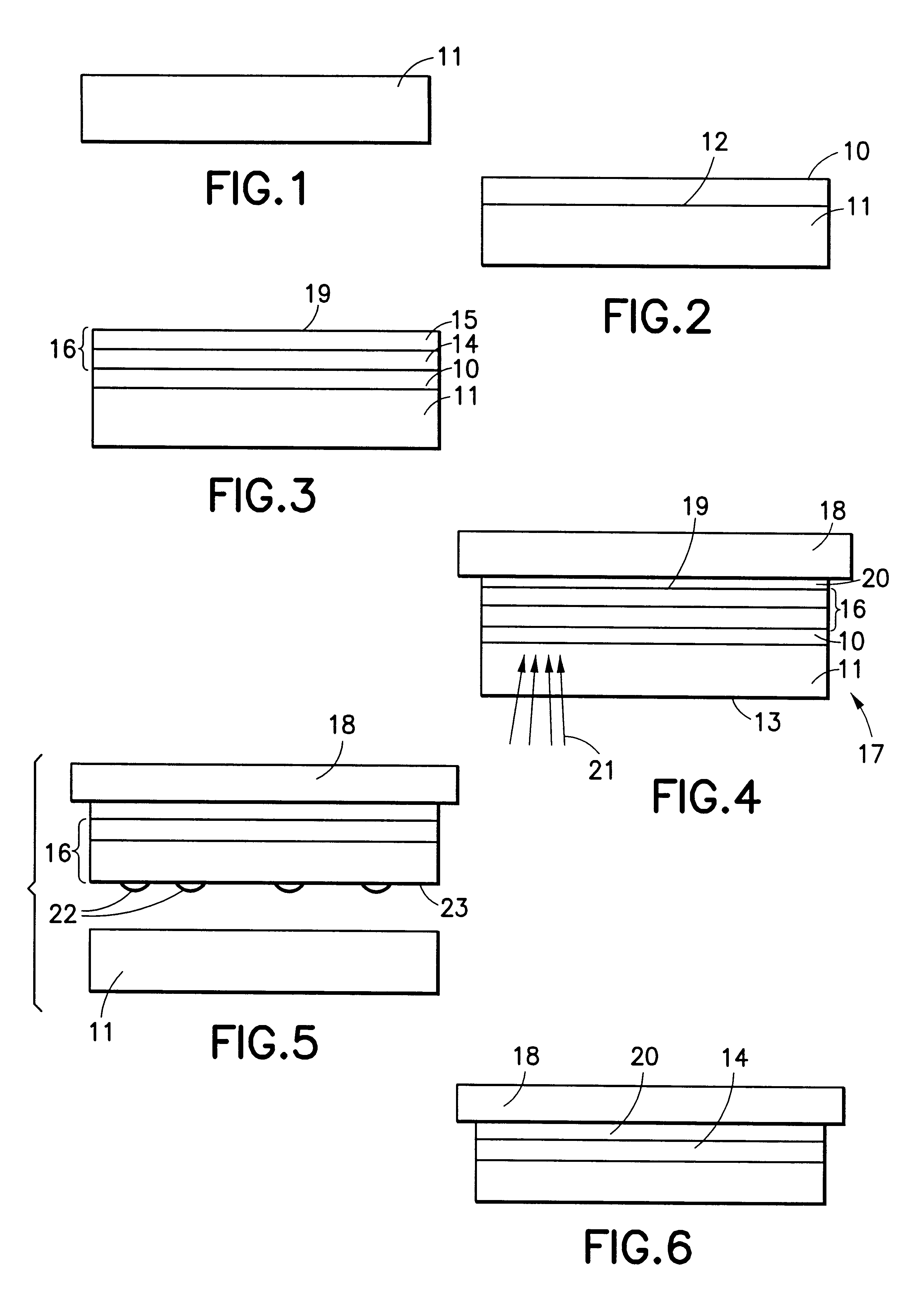Product and process for forming a semiconductor structure on a host substrate
a technology of host substrate and semiconductor structure, which is applied in the direction of crystal growth process, polycrystalline material growth, chemically reactive gas, etc., can solve the problems of poor carrier mobility of less than 1 cm.sup.2/vs, high disorder, and large dislocation density of materials
- Summary
- Abstract
- Description
- Claims
- Application Information
AI Technical Summary
Benefits of technology
Problems solved by technology
Method used
Image
Examples
Embodiment Construction
The process, according to the present invention, forms a substantially single crystal or polycrystalline semiconductor layer on a host substrate, at relatively low temperature. The process is non-destructive in the sense that a single sapphire substrate can be re-used consistently to transplant the semiconductor onto the host substrate.
The process is applicable to column IV semiconductors, and is especially applicable to silicon and germanium as they have the same diamond cubic crystal structure and lattice constants that are within about 4% of one another. For ease of description, the semiconductor will be referred to herein as silicon, it being understood that other column IV semiconductors can be used, especially germanium.
The host substrate can be any substrate. Preferably, the host substrate is glass, metal. a polymeric material or a semiconductive material.
With reference to FIGS. 1 through 6, a thin layer of wide band gap nitride material 10 is deposited or grown on a top surf...
PUM
| Property | Measurement | Unit |
|---|---|---|
| depth | aaaaa | aaaaa |
| depth | aaaaa | aaaaa |
| energy absorption depth | aaaaa | aaaaa |
Abstract
Description
Claims
Application Information
 Login to View More
Login to View More - R&D
- Intellectual Property
- Life Sciences
- Materials
- Tech Scout
- Unparalleled Data Quality
- Higher Quality Content
- 60% Fewer Hallucinations
Browse by: Latest US Patents, China's latest patents, Technical Efficacy Thesaurus, Application Domain, Technology Topic, Popular Technical Reports.
© 2025 PatSnap. All rights reserved.Legal|Privacy policy|Modern Slavery Act Transparency Statement|Sitemap|About US| Contact US: help@patsnap.com


